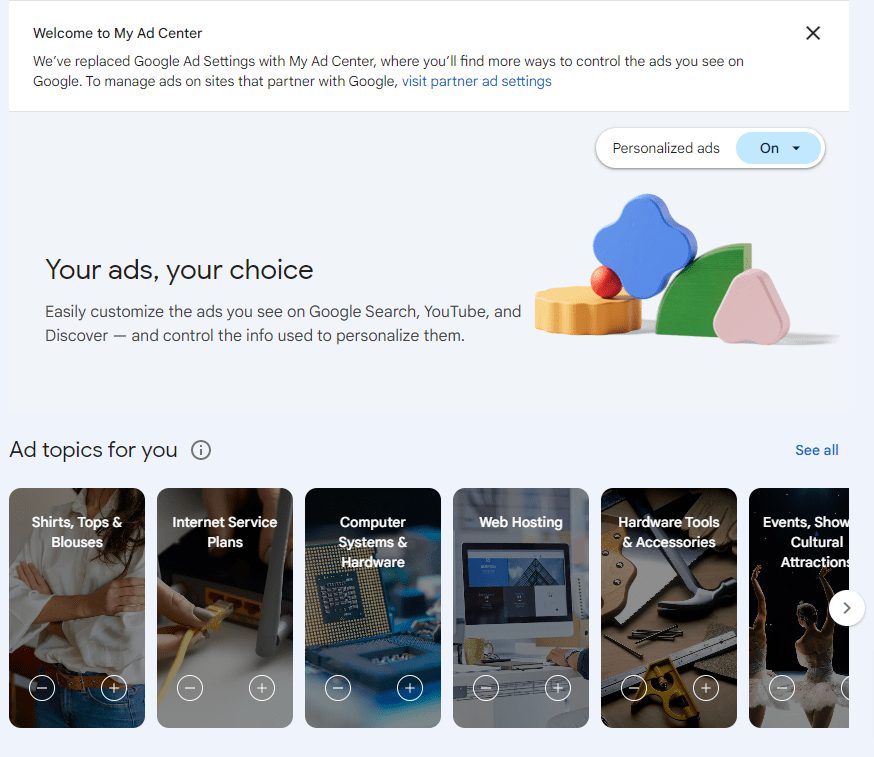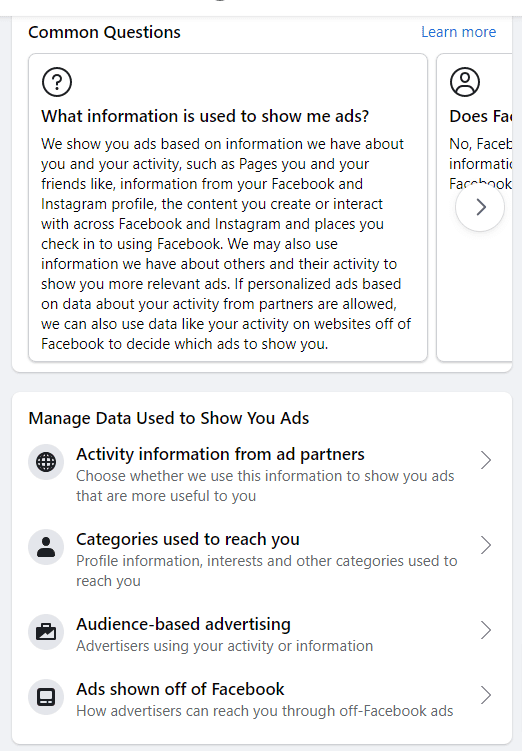If you’ve ever shopped online for something, you’ve likely come across a special type of ads called “targeted ads”. Usually, it begins when you are browsing online for a particular product, possibly just reading reviews or just researching before a potential purchase. After you switch tasks and decide to check something else out, whether it’s the news or anything else, you suddenly start seeing ads for the exact type of product (maybe even the EXACT product) that you were literally just searching for. How is this possible you may ask? It almost seems as if the ads are reading your mind. What you are seeing is a form of targeted ads.
What are targeted ads?
Wikipedia defines targeted advertising as “Targeted advertising is a form of online advertising that uses sophisticated methods to target the most receptive audiences with certain traits, based on the product or person the advertiser is promoting.[1] These traits can either be demographic which are focused on race, economic status, sex, age, the level of education, income level and employment or they can be psychographically focused which are based on the consumer’s values, personality, attitudes, opinions, lifestyles, and interests.“
While this can be applied to location-based real-life advertising such as billboards with “McDonald’s is 7 miles ahead on the left..”, we’ll be focusing on Internet-based targeted ads, such as those annoying product ads that seem to follow you around, possibly even after you’ve purchased the products you were researching.
How do targeted ads work?
Most targeted ads work by using data generated by your browsing session. This data can be as broad as assuming your location based on the IP address you’re visiting the site from or as specific as utilizing the browser cookies left from when you were shopping for that new pair of shoes. The data is then used by the 3rd party advertising company to make assumptions on which ads to serve you to help drive a sale. By logic, if you were already searching for shoes, then serving an ad for shoes may be more relevant than a generic ad (such as one for an Alaskan Cruise).
How can I turn them off?
Completely turning off targeted ads will take some perseverance, but here are the basics to get you started:
Google & YouTube
Turning off ad personalization in Google and YouTube is pretty straightforward. You can simply visit https://adssettings.google.com/ to simply turn it off.

The settings for targeted ads on Facebook is under Settings & Privacy > Settings > Ads > Ad Settings. Here, you can set the ads to “Not Allowed” to prevent targeted ads.

The “Personalized” ads settings on Twitter are under Settings & Privacy > Privacy and safety > Personalization and Data. From there, you can click edit and you’ll be presented by the following screen:

Is there anything further I can do?
Every once in a while, clear your cookies
For a more in-depth look at cookies, check out our blog post “What exactly are Browser Cookies?“. For instructions on how to clear cookies, please check the support site of the browser you’re using.
Use Google’s activity tool to occasionally clear the data
Google actually has a tool called “My Google Activity” that allows you to view, edit and delete the activity that’s associated with your Google account. It’s worth occasionally deleting the activity if you want to reduce your online footprint.
Install an Ad Blocker
Browser Add-ons are available that will actively block ads while the page is loading. A common one is AdBlock (formerly AdBlock Plus). It’s available for most common browsers and does a great job getting rid of those pesky ads.
Use incognito mode
When you use Google Chrome’s “Incognito” mode, it will basically disable the storage of cookies and the other data that relate to your browsing. For more information on Incognito mode, check out our blog post “What is “Incognito mode” in Google Chrome and Why would you use it?“.
What happens after I turn them off?
Unfortunately, when you turn off targeted ads, it doesn’t actually remove ads. In place of those “targeted ads”, you’ll start seeing more generic ads because the advertiser is making more broad guesses on which ads may be relevant to you. You may start seeing ads for TV’s, new cars or even 7/11 stores.
In conclusion, Turning off targeted ads doesn’t actually turn off the ads. However, it can go a long way to protect your online browsing data from 3rd party advertisers. If you have any questions about protecting your data, feel free to contact SandStorm IT at 901-475-0275.

